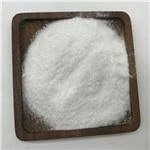Exploring 6-Amino-1,3-Dimethyluracil A Multifaceted Compound
6-Amino-1,3-dimethyluracil is a fascinating molecule that has captivated the attention of chemists and biologists alike due to its structural uniqueness and potential applications. As a derivative of uracil, a notable pyrimidine base found in RNA, 6-amino-1,3-dimethyluracil combines several functional groups that enhance its biochemical versatility. This article will delve into its structure, synthesis, biological significance, and potential applications in various fields.
Structure and Properties
The chemical formula of 6-amino-1,3-dimethyluracil is C7H10N4O2. Its structure features a uracil backbone modified by two methyl groups at the 1 and 3 positions and an amino group at the 6 position. This unique arrangement contributes to its ability to interact with various biological systems. The presence of the amino group can facilitate hydrogen bonding, which is crucial for its interactions with nucleic acids and proteins.
The compound's unique molecular structure not only affects its solubility and stability but also its reactivity. The presence of electron-donating methyl groups can influence how the molecule engages in biochemical reactions, making it an essential candidate for further exploration in medicinal chemistry.
Synthesis
The synthesis of 6-amino-1,3-dimethyluracil typically involves multiple steps, starting from simple precursors that undergo various transformations. One common method includes the methylation of uracil followed by the introduction of an amino group through a substitution reaction. Recent advancements in synthetic methods have introduced greener approaches, including the use of microwave-assisted synthesis and solvent-free conditions, to enhance yield and reduce environmental impact.
These improvements in synthetic methodology not only augment the accessibility of 6-amino-1,3-dimethyluracil for research but also enhance the feasibility of producing it on a larger scale for potential industrial applications
.6-amino-1,3-dimethyluracil

Biological Significance
The biological significance of 6-amino-1,3-dimethyluracil is underscored by its potential role in nucleic acid metabolism and its implications in cancer research. Some studies have suggested that this compound exhibits anticancer properties, possibly by altering nucleic acid synthesis or influencing cellular signaling pathways.
Additionally, its structural similarity to naturally occurring nucleobases suggests that it may act as a modulator in various biochemical pathways. This offers intriguing possibilities for its use in developing novel therapeutic agents that target specific enzymes or receptors involved in disease processes.
Applications in Research and Industry
The diverse applications of 6-amino-1,3-dimethyluracil extend into the realms of pharmaceuticals and biotechnology. In drug development, its potential as an antiviral or anticancer agent has been a focus of research, with ongoing studies aimed at understanding its mechanism of action and optimizing its efficacy.
Moreover, in molecular biology, modified nucleobases are often employed to study DNA and RNA interactions. 6-amino-1,3-dimethyluracil could be utilized as a probe to investigate nucleic acid dynamics, providing insights into fundamental biological processes. Researchers may exploit its properties to develop better pharmaceuticals, gene therapies, and diagnostic tools.
Conclusion
In conclusion, 6-amino-1,3-dimethyluracil is more than just a modified nucleobase; it represents a significant intersection of chemistry and biology. Its unique structure and properties offer a platform for scientific innovation, with implications for drug development and biotechnological advancements. As research continues to unveil the depths of its biological significance, 6-amino-1,3-dimethyluracil may play a crucial role in the future of medicinal chemistry and molecular biology, paving the way for novel therapies and improved diagnostic methods. Its journey from a chemical curiosity to a potential therapeutic agent exemplifies the transformative power of molecular research in addressing some of humanity's most pressing health challenges.

